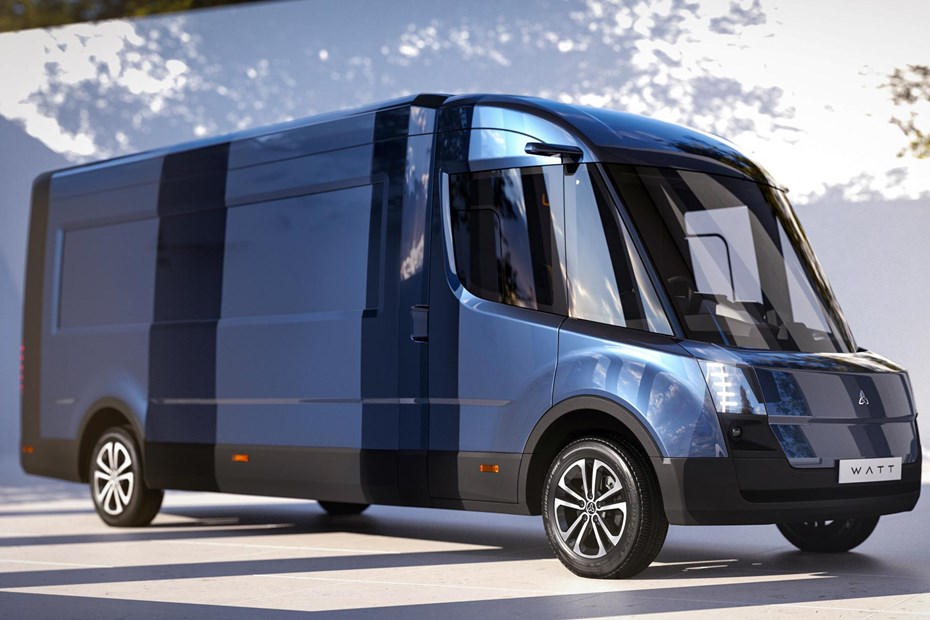The WEVC eCV1 large electric van is ready to go into production, although the finished article won’t head to customers until 2026 at the earliest.
WEVC (Watt Electric Vehicle Company) first showed off a prototype version of the eCV1 at the 2023 CV Show, and has now fine-tuned the vehicle to the extent that it is ready to go on sale. That bodywork at the CV Show was built by Etrux, a company that specialises in conversions, but this production van gets an entirely new body, created in house by WEVC.
The van will still be based on the company’s innovative PACES platform, which was designed around the battery. PACES stands for Passenger and Commercial EV Skateboard, meaning that all the essential bits are packed into this structure, allowing custom bodywork above.
This is something that few other electric vans have done thus far, with most being conversions from diesel models or following conventional design practices. More recent vehicles, such as the latest Renault Master and second-generation Ford Transit Custom, have been designed with electric in mind from the start, but they also factor-in combustion engine versions as well.
In particular, the WEVC platform sees the batteries integrated into the structure, rather than being bolted on as a separate pack. WEVC says this means it can save weight and boost structural rigidity at the same time.
Innovative cabin
The most striking part of the WEVC eCV1 is its cabin, though. There is a choice between seating layouts, with a two- and three-seater option available. However, the eCV1’s driving position is set in the centre, much like the classic McLaren F1 supercar. This allows for improved visibility, according to WEVC, and lets the driver get in and out of the vehicle from either side.

This will speed up urban drop-offs and improve safety as it will let the driver have direct access to the pavement regardless of which side of the road they park. It should also help WEVC cut costs when it comes to supplying the vehicle to left- and right-hand drive markets.
Changes over the prototype include a raised roof height in the cabin.
Luton-esque loading bay
WEVC has also tweaked the loading bay on the eCV1, now describing it as being like a Luton van. This means that it has a large capacity and a low loading height – a combination valued by delivery firms. It hasn’t given details on exactly how large the loading bay is but the boxy design of traditional Luton models are often bigger than even the most spacious of conventional large vans.
Unlike a Luton, though, the eCV1’s body is integrated, rather than being a conversion. This means that there is greater structural strength and improved aerodynamics.
The payload is decent, but not ground breaking. The 3.5-tonne model offers 1,000kg while the 4.25-tonne version ups this to 1,750kg.
Driving range and pricing still to be confirmed
As things stand, WEVC hasn’t confirmed the precise electric driving range of the finalised eCV1, but if the prototype is anything to go by then it should be in excess of 200 miles.
In fact, the prototype’s stats don’t look as impressive as they once did, thanks to the recent boom in electric models in the large van class. That vehicle only promised 235 miles from a 111kWh battery. This is some way short of the biggest electric ranges offered, with the 2024 Renault Master E-Tech‘s claimed 285 miles per charge now the one to beat.
The Renault manages this with an ordinary structure and a much smaller 87kWh battery as well, so it would seem WEVC has a little work to do to back up its innovation claims. However, it says that the projections are now ‘Substantially higher than the previously released 235-mile figure.’
Testing to ascertain exactly how much higher is now ongoing, with more news expected before the launch.
Pricing is also some way off being finalised, with more details not likely to emerge until close to the 2026 launch date. We’l bring you more when we have it.
Just so you know, we may receive a commission or other compensation from the links on this website - read why you should trust us.






